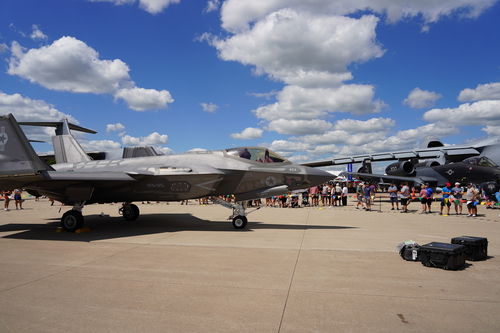
The Lockheed Martin F-35 Lightning II, a fifth-generation stealth fighter, recently came under the microscope after a Government Accountability Office (GAO) report highlighted increasing sustainment costs and diminished operational plans due to reliability issues.

U.S. Secretary of Defense Lloyd J. Austin III ardently defended the aircraft, stating, “I would not categorize the F-35 as a paperweight,” during a House Armed Services Committee hearing, countering assertions that the F-35 has become too costly and unreliable for the U.S. military and its allies.

The GAO report disclosed that sustainment costs for the F-35 had escalated from $1.1 trillion in 2018 to $1.58 trillion in 2023, with the Department of Defense planning to fly the F-35 less than initially estimated, partly due to reliability issues.

Despite these challenges, Secretary Austin and the Department of Defense remain committed to the F-35 program, which is evident from the over $61 billion allocated in the fiscal year 2025 budget to “assure U.S. air dominance,” including ongoing upgrades and sustainment.

Technology Refresh 3 (TR-3) is one such crucial upgrade delayed but expected to significantly enhance the F-35’s capabilities by improving its digital infrastructure, weapon systems, and pilot interface.

The TR-3 software will also allow the jet to carry new weapons, sensors, and cyber countermeasures, vital for maintaining the cutting edge in combat aircraft technology.

Amid the scrutiny, comparisons between the F-35 and the F-22 Raptor, another advanced fighter by Lockheed Martin, have resurfaced.

The F-22 excels in air-to-air combat with superior speed and climb rate, positioning it as an unrivaled dogfighter.

However, the F-35 boasts an armament versatility that the F-22 lacks, including nuclear deterrence and air-to-ground strike capabilities.

With modern combat scenarios increasingly involving advanced communications and technology, the F-35 stands out for its data connectivity and coordinative capabilities, making it the preferred aircraft for a variety of missions.

Despite criticisms and operational challenges, the F-35 program has the U.S. Defense Secretary’s support. “We continue to work to make sure that we get our aircraft operational,” Austin told lawmakers.

The steadfast commitment to the F-35 signifies its integral role in the current and future landscape of U.S. airpower, where air dominance remains a strategic priority.

The DOD has not been accepting new F-35s until TR-3 is ready, though Lockheed Martin and F-35 Joint Program Office head Air Force Lt. Gen. Michael Schmidt have said the Pentagon may begin taking delivery of jets with a “truncated” version of TR-3 later this year.

“This includes continued funding for the modernization and sustainment of the F-35 and F-22 fleets while developing the next-generation fighters and autonomous collaborative combat aircraft critical to maintaining superiority in the skies,” Austin wrote.

“I agree in the future we should take [and] we should have a different approach,” Austin said. “We continue to work to make sure that we get our aircraft operational.”
Relevant articles:
– U.S. Military Declares F-35 No ‘Paperweight’ and One of the ‘Best Aircraft’, The National Interest
– F-35 Vs F-22: Comparing & Contrasting The Iconic Lockheed Martin Fighter Jets, simpleflying.com
– Austin Pushes Back on Lawmaker’s F-35 Criticism: Not a ‘Paperweight’, Air & Space Forces Magazine
– Air & Space Forces Magazine, Air & Space Forces Magazine

